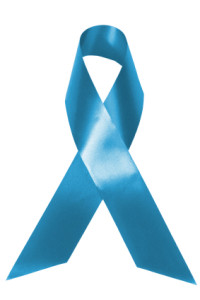March is Trisomy Awareness Month
About one in 5,000 babies is born with trisomy 18, […]

Trisomy 18 and trisomy 13 are chromosomal disorders. They are similar to the more well-known chromosomal disorder, Down syndrome, which is a trisomy of the twenty-first chromosome. A trisomy occurs when a particular chromosome is replicated three times upon conception. Instead of one chromosome from each, the sperm and the egg, there is a possibility that an extra gene is passed on. The extra chromosome is to blame for all subsequent complications associated with trisomy 18 and 13.
Testing for trisomy 18 and 13 is crucial for parents-to-be, and can include a screening and/or a diagnostic test. A screening tests for the chances that your baby will be born with trisomy 18 and 13; it is not a diagnosis. Diagnostic testing looks at cells to see if the trisomy is actually present before birth. This is done by evaluating the amniotic fluid or from the placenta. A chromosomal analysis can also be performed on the placenta, a blood sample or the amniotic fluid and is over 99.9 percent accurate. If you have had a baby that was diagnosed with trisomy18 and 13 before, it’s best to consult with a genetic counselor to see if you’re at risk.
Complications of trisomy 18 and 13 include developmental delays, heart defects, kidney malformation, and head and facial abnormalities. Babies are often born with extra fingers and toes, spina bifida and a cleft palate. About 90 percent of babies born with trisomy 18 will also have heart defects. Babies who are born with trisomy 13 will typically have a very low weight at birth, this occurs even when babies are full term. Unfortunately, many babies who are born with trisomy 18 and 13 will only live for a few days or months after birth because of complications and infections. However, there are long-term survivors who have beaten these odds, some even making it to adulthood.
Although the prognosis for babies diagnosed can be disheartening, there are many support groups available. Support Organization for Trisomy, or SOFT, is a non-profit organization for those families who are affected by trisomy 18 and 13. There are SOFT chapters all over the country where families can band together and create a support circuit.
SOFT also hosts an annual conference for families who are affected by trisomy 18 and 13 and other chromosomal disorders, the conference offers educational and supportive workshops where families can provide love, insight and support. The conference will held in Providence, Rhode Island during July 2013. For more information on SOFT and the annual conference, check out trisomy.org.
While it’s daunting to think that there is nothing you can do to prevent this diagnosis, it’s comforting to know that there is a way to screen and test for trisomy 18 and 13. Families everywhere can find relief in knowing that there are groups whose mission is to show the world that trisomy 18 and 13 can be overcome even if it’s just by love and support until a cause and cure are found.







